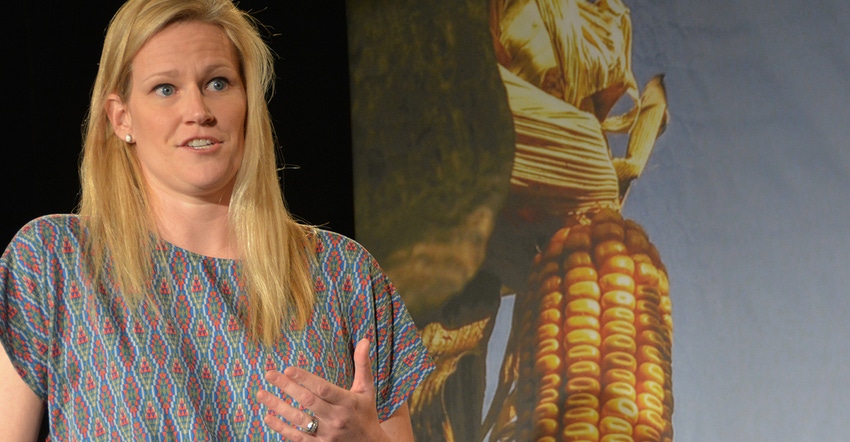January 17, 2018

Deciding when and how to terminate a cereal rye cover crop in the spring is tricky. Spray too late and the rye may dry out the soil too much and hurt the cash crop. Spray too early and you’ll lose some of the water-absorbing and weed control benefits that cereal rye provides.
Abbey Wick, North Dakota State University Extension soil health specialist, has lots of experience terminating cereal rye cover crops, and she has seen what many farmers have tried. She offers eight tips on getting it done just right.
1. Watch moisture. Always watch soil moisture on fields where cereal rye was planted in the fall. If conditions are wet, let the rye grow, but keep watching it. If conditions are getting dry and the seedbed is drying out too much, then the cereal rye needs to be terminated. “I would recommend terminating the cereal rye about two or so days before conditions would be perfect for planting soybean,” she says.
2. Get precise with moisture meter. “A shovel can be used to check moisture conditions, but I carry a moisture meter. Once the moisture percentage gets to around 35%, then I am closely watching that field
— 50% is saturated and 5% is way too dry. For me, 35% seems to be a good mark to hit.”
3. Trust your gut. No matter what the moisture meter says, if you are concerned that the soil is getting too dry, then terminate using a full rate of herbicide.
4. Look at soil types. “On sandier soils, I would be quicker to terminate and certainly would watch the cereal rye more closely than a soil with a little more clay in it. But the clay soils need to be monitored, too.”
5. Use a herbicide, not tillage. “I don’t recommend tillage because it won’t kill the cereal rye and also requires a commitment to a couple more tillage passes to make a decent seedbed,” she says. Spraying the rye out and planting into the seedbed with the rye roots is better. “All the work the rye roots did to build the soil structure will be beneficial to water movement into the soils and also the residue will help hold some moisture if conditions turn dry. Not to mention the benefits of the residue in helping with some weed control.”
6. Strip till in the fall. “If you wait until the spring, the root balls on cereal rye can make it difficult to strip till. Or strip till very early in the spring before the rye gets too big.”
7. Be careful with green planting. If rye is not terminated prior to planting soybean, then it needs to be terminated within a day of planting soybean. “This goes against Risk Management Agency guidelines, so a conversation with your crop insurance agent is a good idea.”
8. Don’t plant corn into cereal rye cover crop. “I never use cereal rye before corn,” she says. “Oats or barley are better, but go light on the rate to keep some dark soil to help with warming up the soil. But if you do use cereal rye before corn, the rye needs to be terminated 14 days in advance of planting corn. No exceptions.”
You May Also Like




